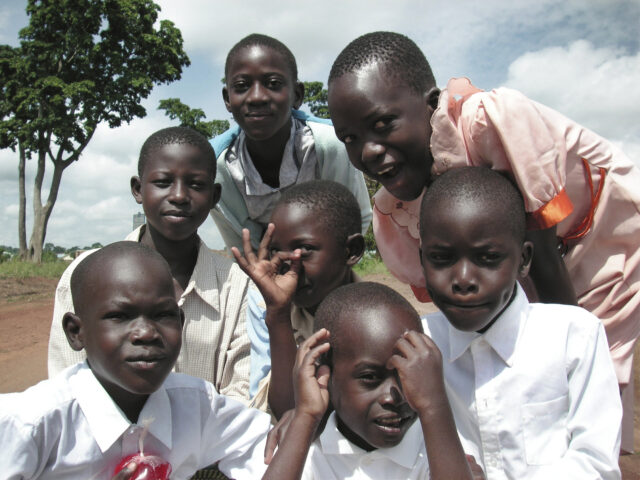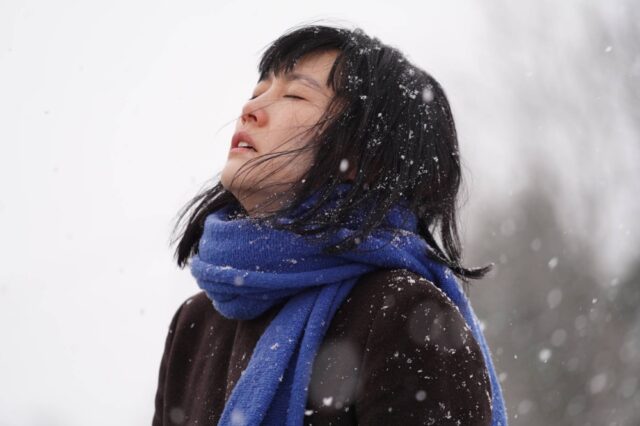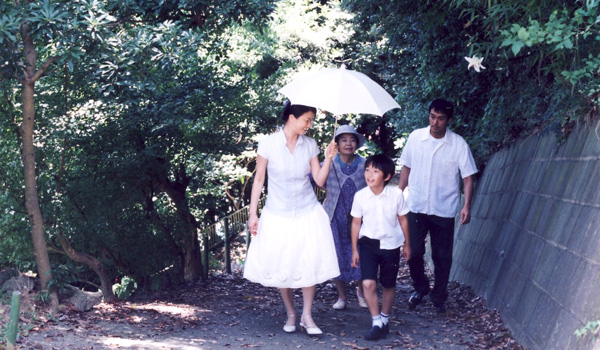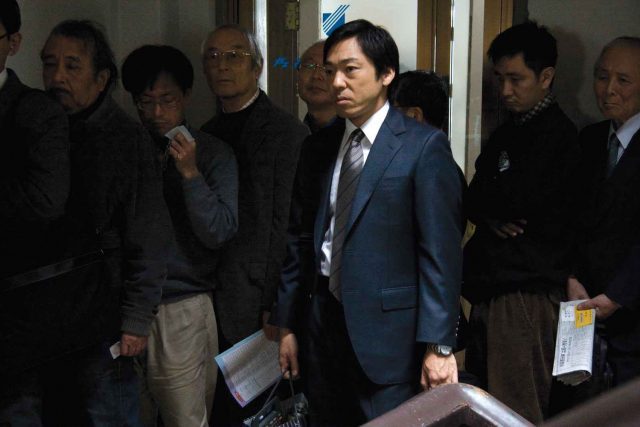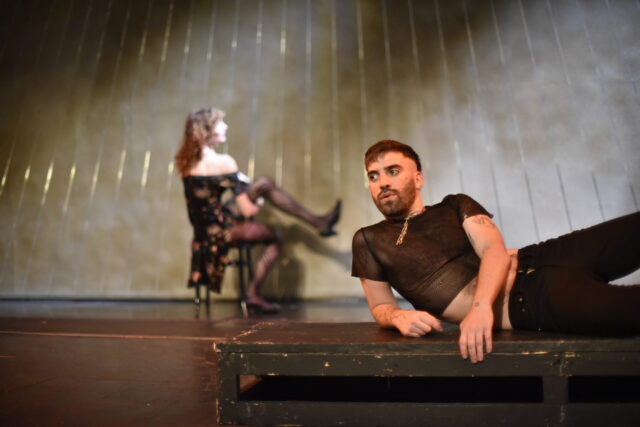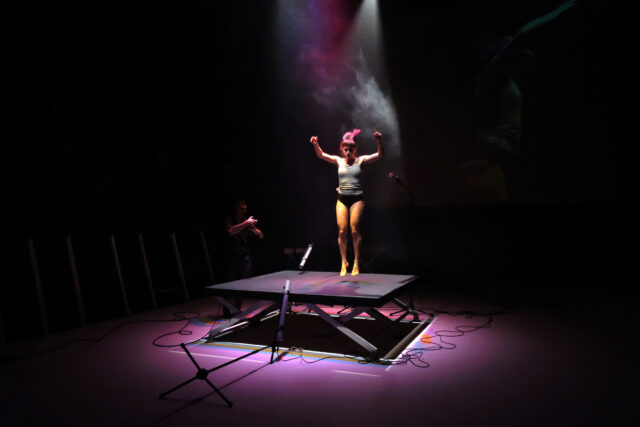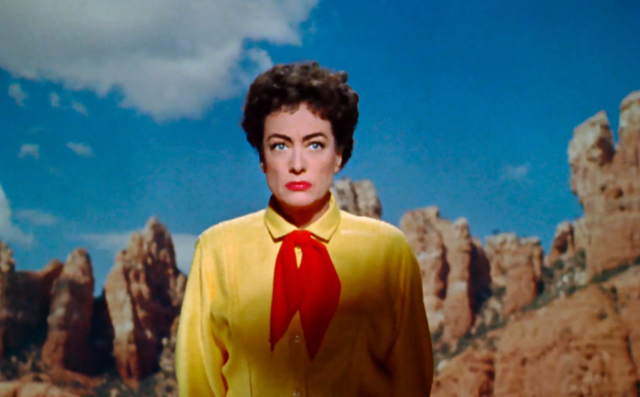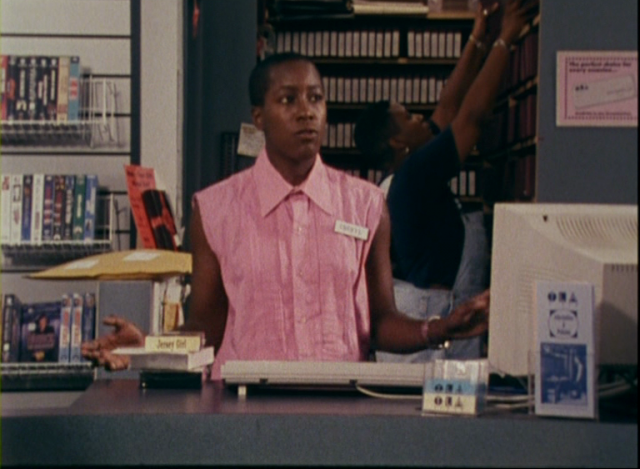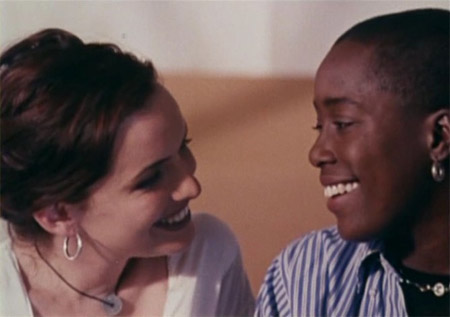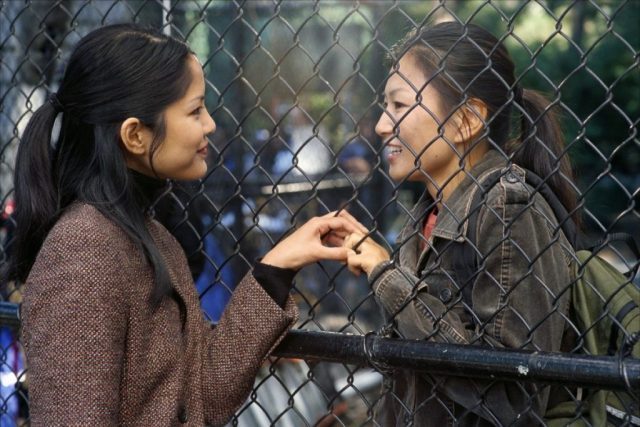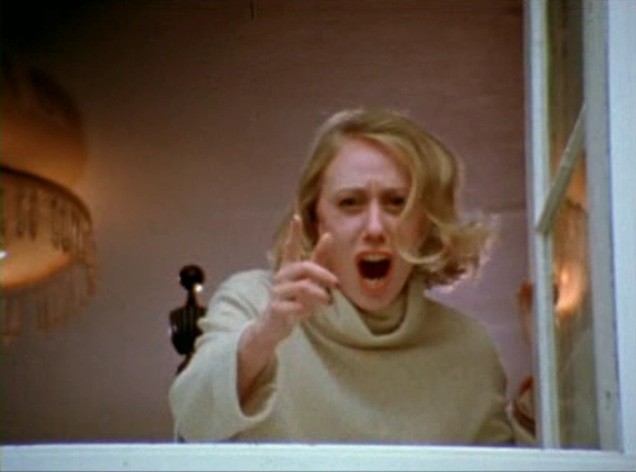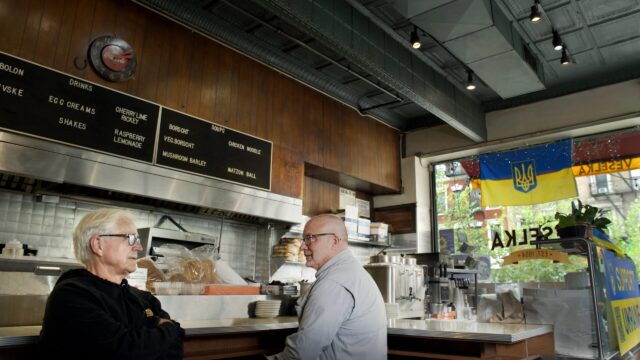
Documentary traces multigenerational history of Veselka, including father and son Tom and Jason Birchard
VESELKA: THE RAINBOW ON THE CORNER AT THE CENTER OF THE WORLD (Michael Fiore, 2023)
Village East by Angelika
181-189 Second Ave. at 12th St.
Opens Friday, February 23
veselka.com
www.angelikafilmcenter.com/villageeast
Watching Veselka: The Rainbow on the Corner at the Center of the World is like having two meals, the first a solid lunch, the second a complex, emotional dinner.
Michael Fiore wrote, directed, produced, and edited the film, which starts by telling the fascinating history of the beloved restaurant, opened by Ukraine immigrants Wolodymyr and Olha Darmochwal as a candy store on the southeast corner of Second Ave. and Ninth St. in 1954. It expanded over the years to a full-service restaurant as it was handed down to Wolodymyr’s son-in-law, Tom Birchard, and then Tom’s son, Jason. Cinematographer Bill Winters follows Jason and his employees greeting customers and working in the back office and kitchen, where they make five thousand varenyky (pierogi) a day, three thousand latkes (potato pancakes) a week, and fifty-two hundred gallons of borscht a year.
“Jason Birchard has a hunger to feed people like his father and grandfather before him,” narrator David Duchovny explains. “But the feeding goes beyond food itself. Food should unite us, and it can transport us.” Duchovny grew up in the area; his paternal grandfather was from Ukraine, his paternal grandmother from Poland.
Jason initially was not interested in following in his father’s footsteps, but stuff happened. “I’ve worn many hats here as the proprietor of Veselka,” Jason, who has worked at the eatery since he was thirteen, says. “I never really envisioned a long-term future here in the business. And with the onset of the war, some days I need to give a little extra love to my Ukrainian staff, who have been unsure of what the future holds.”
In the first half of the film, we are introduced to Mrs. Slava, who fries the latkes; grillmen Dima Prach and Ivan; Jason’s nephew Justin, who oversees business development; pastry chef Lisa; potager chef Arturo; short order cook Max; operations manager Vitalii Desiatnychenko; muralist Arnie Charnick; and the pierogi ladies. Everyone is considered family at Veselka, from the employees to the customers. “The way that they treat people personally is a direct reflection about what makes this place so special,” Lisa says.
During the pandemic, Veselka, which means “rainbow” in Ukrainian, turned to outdoor dining; in one poignant scene, Jason and Ukrainian consul general to New York Oleksii Holubov can only shrug as Mayor Adams, eating borscht, pays more attention to the cameras outside than to Jason’s pleas for Hizzoner to support the restaurant industry.
But everything got more complicated on February 24, 2022, when Russia invaded Ukraine; the second half of the film focuses on Jason’s efforts to help his staff, most of whom have relatives in Ukraine, some of whom are determined to stay, others considering coming to America. Several male employees feel guilty for not returning to Ukraine to join the fight. For every person who shares their personal story, another chooses not to because it’s too painful. Veselka collects donations of clothing and other goods and raises money through borscht sales and its World Central Kitchen Ukraine Bowl.
Dima wants to bring his mother and aunt, who are twins, and his father and uncle to the United States. Vitalii is trying to get his mother out of Ukraine but agonizes when he cannot get in touch with her for days. The Ukrainian national baseball team comes to Coney Island to play charity games against the NYPD and FDNY. Charnick designs a new mural celebrating Ukrainian strength. Jason puts off expansion plans in order to help the community. Employees gather to watch news reports and speeches by Ukraine president Volodymyr Zelenskyy. New York governor Kathy Hochul stops by to find out what she can do.

Veselka began life as a neighborhood candy store opened by Ukrainian immigrants
Veselka: The Rainbow on the Corner at the Center of the World is a testament to the human spirit, a vivid depiction of a community in action, showing how individuals can make a difference in difficult times. Jason is an inspiration, a mensch who doesn’t believe in the word no; he has an inner drive to do what’s right for others. He feeds people’s souls and their stomachs.
Ryan Shore’s score can get treacly, but David Sanborn’s sax solos lift the music. Fiore (Floyd Norman: An Animated Life) captures the essence of Veselka, which is the heart of the Ukrainian community in New York City and a vital part of the East Village. The film is especially poignant as the war enters its second year and the US Congress is taking its time deciding whether to send more funding to Ukraine.
Veselka: The Rainbow on the Corner at the Center of the World opens February 23 at Village East, just a few blocks from the restaurant, making your choice of where to eat before or after the movie that much easier. The 7:05 screenings on Friday and Saturday will be followed by Q&As with Fiore and Tom and Jason Birchard.
[Mark Rifkin is a Brooklyn-born, Manhattan-based writer and editor; you can follow him on Substack here.]

